|
Each week our specialists publish a research paper about Art and its markets.
Antiques, painting, drawing, sculpture, furniture, fine art, porcelain, ceramic, work of art, carpet, tapestry, silver are among the subject studied.
You can receive our free weekly research paper by email by subscribing to our newsletter.
 The manufacture of Boch Frères Kéramis (Belgium, Province of Hainaut, La Louviere) is now well known through the work of the very dynamic Charles Catteau . The one of the sculptor Catherine Barjansky is much less even though her career is international: Rome, Berlin, New York, Vienna, Paris, Brussels ... The manufacture of Boch Frères Kéramis (Belgium, Province of Hainaut, La Louviere) is now well known through the work of the very dynamic Charles Catteau . The one of the sculptor Catherine Barjansky is much less even though her career is international: Rome, Berlin, New York, Vienna, Paris, Brussels ...
» More

 Saturday, January 14, the SVV Philocale, in collaboration with our team of experts in antique furniture and works of art, will auction in Olivet old books, old masters and modern paintings and drawings, jewelry, watches, silverware and furniture and works of art.
Let's have a look to some lots.
The amateurs of old books and fine bindings will find under lot 5 of the catalogue a book by d'Hozier, Les noms, surnoms qualitez armes et blasons des chevaliers et officiers de l'ordre du st Esprit. Published in Paris by Mr. Tavernier in 1634. This is a in 4 demi, the binding later with on the front " M. Caminade de Castres officier des ordres du Roi, maitres des requestes honoraire de l'hotel du Comte d'Artois. 1779. We find an ex-libris on title page. Cutter short at the top. It is decorated with an engraved half-title, three large and beautiful plates by A. Bosse and 58 pages (out of 59, one missing as in many copies) with the coat of arms of each knights and commanders; the sheet 3 is a title. Some margin short but a good book. Our book is a first and only edition; it is expected around 400/600 Euros.

In old paintings, note lot 28. There are two oil on panels’ paintings from the Flemish school of the eighteenth century, Le relais de poste, after to Philips Wouwerman and Le maréchal ferrant. These two paintings forming pendants measure 53x40 cm and are estimated 3500/5000 Euros for two.
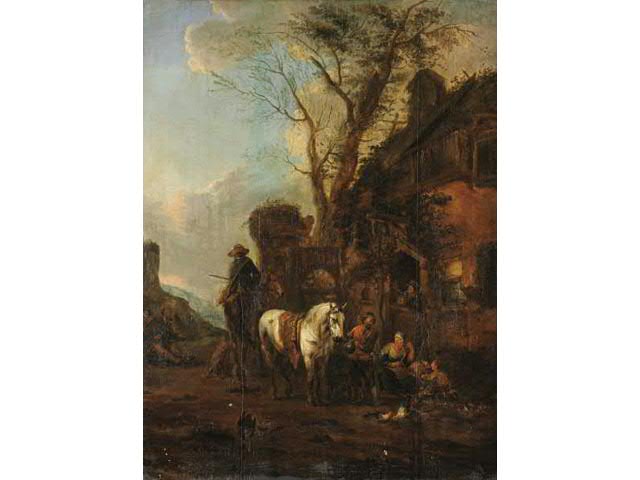
Among the many bronzes and sculptures we chose the lot 93, Bust of Daphne. This is a bronze with brown patina, signed and dated 1919 Etienne Forestier. It rests on a wooden pedestal Stand and measures 43 cm high off base. Our bust is estimated 500 to 800 Euros.
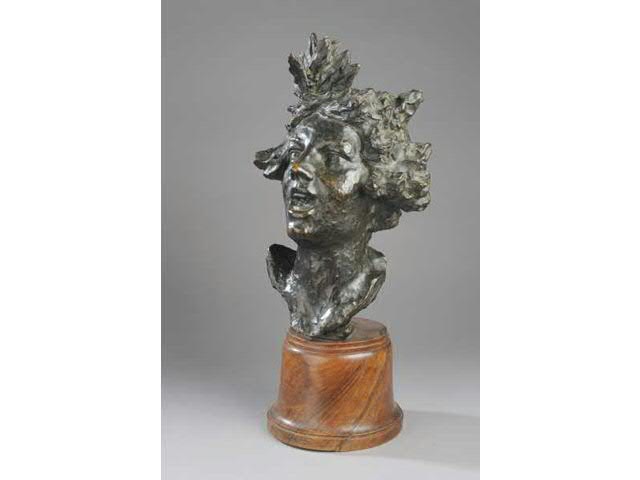
In glass and Art Nouveau let us look the lot 140 which is a red glass globular vase with collar decorated with tan spotted. The shoulder is highlighted by two side handles stretched and applied hot. It is signed Daum Nancy and measures 27 cm high.
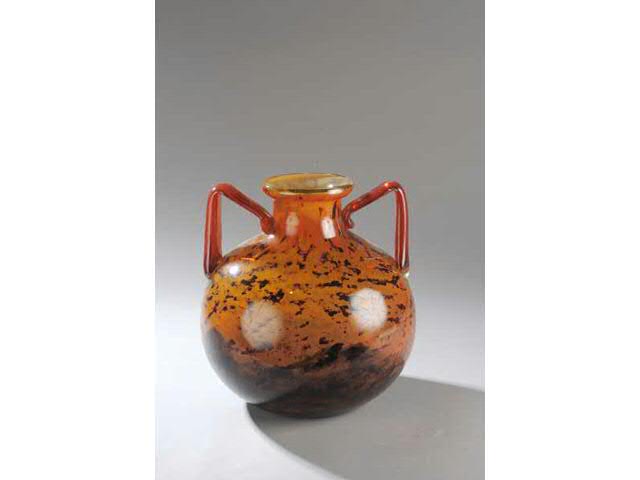
Lot 190 is a pair of ormolu bronze covered vases forming brule parfum on a square base with pearls. They have a rich ornamentation of love, garlands of vines, triglyphs, drops and interlacing. The handles are supported by rams' heads. They are signed "E. Carlier" and date from the mid-nineteenth century. The Parisian sculptor Emile-François Carlier has worked with the jeweler Emile Froment-Meurice. The pair is expected around 2000 to 3000 Euros.
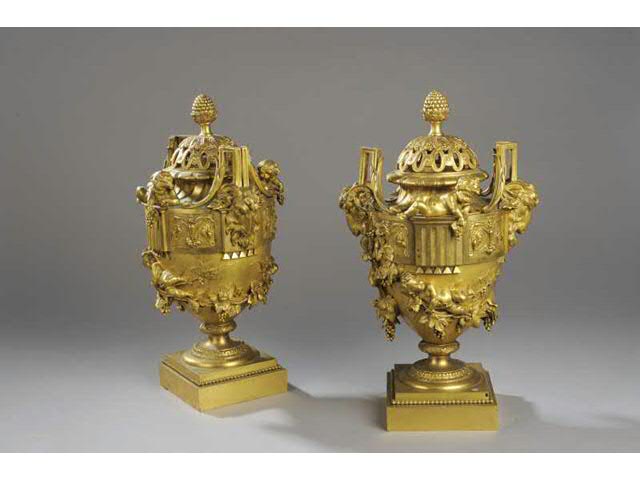
Our favorite (main illustration) is a magnificent chest of drawers, lot 200, estimated 5000/8000 Euros. With an arched facade, veneer in kingwood decorated with square on the tip, it opens by five drawers on four rows separated by rails. It has a rich ornamentation of ormolu bronzes such as handles, keyholes with dolphins and a female face apron. It dates of the Regence period. It comes with a later marble top.
Over 230 lots will be auctioned with reasonable estimates and works for everyone from the seventeenth to the twentieth century and for all budgets, the lowest estimate being less than 50 Euros. Feel free to come to the exhibition and indulge yourself.
Cedric Henon, Continental Furniture Specialist
Informations :
Online catalogue : Catalogue
Viewing: Friday 13th January from 12h to 18h and Saturday 14 th January from 10h30 to 12h
Sale: Saturday 14th January 2012 from 14h30
Where: Domaine de la Fontaine -1379, rue de la Reine Blanche - 45160 Olivet
» More


 At the top of the wines of Champagne reigns the "special vintages" of the great Champagne houses. Some of them are symbol historic vineyard, such as the vintage "Winston Churchill" with POL ROGER, which marked the enduring friendship between the Great Man and Odette Pol Roger, started at a lunch around a memorable POL ROGER 1928 shortly after the release.
A part of history
On the same register, we will remember the special order of Tsar Alexander II of Russia that gave birth to the famous crystal bottle with flat cul. Specially designed on the order of Louis Roderer, it was designed to meet the desire of singularity of the monarch and his phobia of poisoning of his favorite beverage or concealment of explosives.
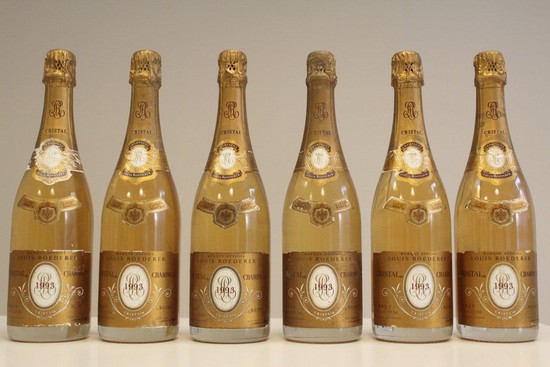 A low maturation
A low maturation
However, the success of these wines "haute couture" is not only in their historical basis or in the work it takes. The treatment of these unique wines from the vineyard to bottling them make some of the great wines of exceptional gifted superb aging potential. They are produced from the best vineyards, the best years only, to the sole discretion of the cellar master, with grapes harvested from a single year, in contrast champagnes "no year" produced by assembling vintage.
Moreover, aging of wines on the lees in the cellar for several years (sometimes more than 10 years for some) will give rise to highly complex aromas and a finesse of bubbles none.
Dom Perignon at the top
Thus it falls to date only 36 vintages of Dom Perignon from the first vintage produced in 1921, sold only in 1935. It is also regarded as the greatest of all time! An auction at Christie's New York in 2004 has sacralized forever this vintage of 1921 by the award of a set of 3 bottles to $ 24 675!
Top years on the market
Today we find on the market special vintages of superb year 2002. Kept generally 6-7 years in a cellar before marketing, the first bottles of this vintage were offered for sale last year from Dom Perignon. Roderer has meanwhile already run out of Cristal 2002 and now offers its 2004 vintage. The grapes of the 2003 vintage were not considered eligible by the winemaker to develop this exceptional vintage.
The best special vintages widely available right now are Bollinger "Grande Année" 2002 (+ / - € 90), Taittinger "Comtes de Champagne" 2000 (+ / - € 90), and Dom Perignon 2002 (+ / - € 120).
Nacim TILOUINE, fine wine specialist.
More:
- Vins et Millésimes, the top wine specialist, http://www.vinsetmillesimes.com/
» More

 While the news and the market have the Street Art on an ascending wave such as in Paris, London and New York, there is an place where urban art has simply not right to exist Singapore. Any artist caught in full realization of a fresco on the walls of the city is sure to get a ticket for a stay in prison, without any recourse. For the record, a Swiss artist, who rose to the challenge of painting on a train a year ago, was sentenced to imprisonment without the intervention of the Swiss authorities. The punishment is disproportionate, but we must remember that Singapore is a dictatorship and that everyone's life is under control.
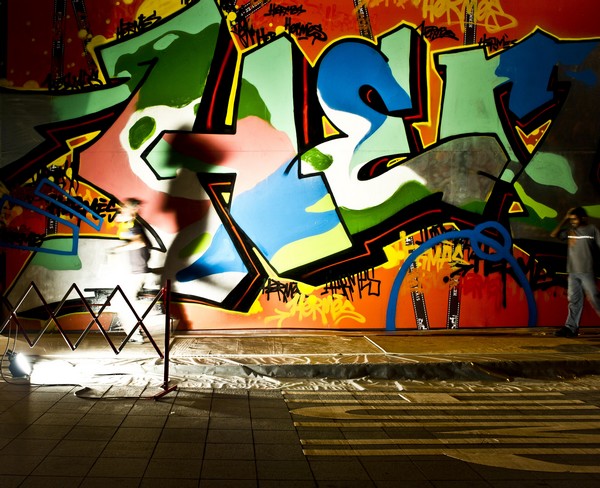 A true artistic involvement
A true artistic involvement
In this context, the exhibition "Off the Wall" which just closed its doors on November 26 in Singapore takes a very special meaning. In addition to the proposed meeting between 9 artists from France (including an American, Sonic) and eight Singaporean artists, this is a forum to give this art a force to express on canvas. Creativity is not so far restrained and works explode originality fueled by a strong cultural heritage - despite a global flood and a Western model reference in the development of the city. The ancestral grounds (carp up » More

 On 7 December, the SVV Valorem Art, in collaboration with our antique furniture and works of art cabinet d’expertise, will auction modern paintings and drawings by Picabia, Paul Jouve and Tom Wesselmann, and jewelry, watches, silverware, and sculptures.
A brief overview of what you can afford with a budget of 300 to 5000 Euros.
From 300 to 500 Euros
Amateurs will have a wide choice.
Among the paintings, the Lot 12 (300/ 500 euros), an oil on canvas signed and dated by René Levrel, View of Toulon, the Mourillon.
In the jewelry section, the pair of earrings (Lot 165) Creole gadrooned gold, embellished with a diamond chevron is expected around 300-350 Euros. A gift of the best effect.
Main illustration.
Under number 236, you will discover a silver set of 12 fruit knives with mother of pearl handle; blades and ferrules are in vermeil. The 12 knives are estimated from 300 to 400 Euros.
 From 500 to 1500 Euros
From 500 to 1500 Euros
Estimated 800 to 1000 Euros, the pair of ormolu candelabra with four light, high of 52 centimeters is quite affordable. It was realized in the nineteenth century and in Louis XVI style. A pair of late eighteenth century would be estimated 5 to 10 times more.
Note also, lot 298 (1200/1500 Euros) which is a tapestry of royal manufactory of Aubusson woven in the second half of the eighteenth century. Our verdure decorated with pagoda and birds is not too large (250 x 212 cm) and will marry any interior.
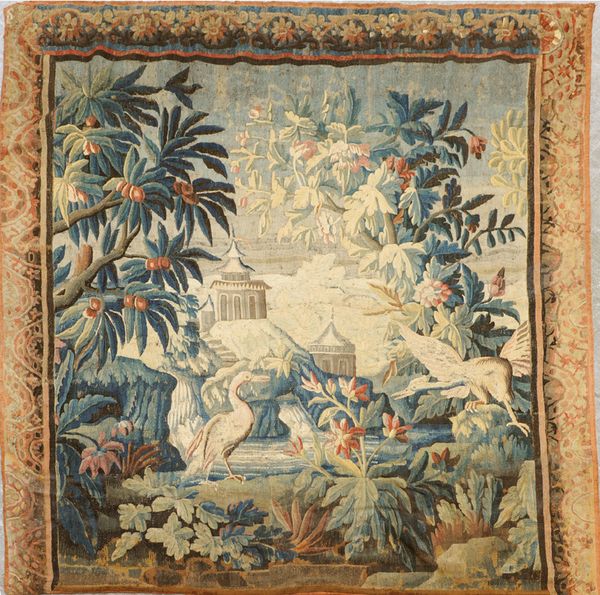 From 1500 to 3000 Euros
From 1500 to 3000 Euros
Lot 218 is an important sterling silver menagere by the famous silversmith Henin. Weighing 4.270 kg, comprising 81 pieces, it allows you to easily accommodate your family and friends for the holidays. The whole is enclosed in a case of black leather. It is estimated from 2000 to 2500 Euros well below the equivalent new.
A set of six chairs (lot 295), four armchairs en cabriolet and a pair of chairs similar to the armchairs will attract lovers of 18 th century classical furniture. This set is elegantly molded and date from the Louis XV period. The woods were redecorated in cream. Estimated 1500 to 2000 Euros, this series will allow you to furnish your living room for a very reasonable sum.
 From 3000 to 5000 Euros
From 3000 to 5000 Euros
We selected two objects, a sculpture and a clock.
Honoré Daumier (lot 287) is represented with a bronze executed by the famous Valsuani in 1965. "Coqueterie" is a dark green patinated bronze. It is only recently that this figure was rediscovered, it is reasonably estimated from 4000 to 5000 Euros. It includes all the talent of caricaturist of Daumier.
Finally, let's look at a clock (lot 301) as a highly original in its model and in the authors of the movement. The movement is supported by two baluster columns with porcelain plates decorated with antique in the style of Wedgwood. The movement for its part is due to the combination of two families of the Swiss watchmakers Robert and Courvoisier. It can be dated from the signature of the dial circa 1800.
 These few lots are just some of the sale with the lowest estimates turn around 50 euros. Whether you're amateurs or just curious please go to the viewing and auction.
These few lots are just some of the sale with the lowest estimates turn around 50 euros. Whether you're amateurs or just curious please go to the viewing and auction.
» More

 Since the creation of the porcelain manufactory of Sevres under Louis XV with the support of the Marquise de Pompadour, the king passed large orders. » More
 Honore Daumier, this name evokes for many of you a caricaturist of society and politics under Louis Philippe and the Second Empire. But he was also a true artist of his time both engraver and lithographer, painter and sculptor. » More
|